Ecology and Energy Flow: Population, Habitats, and Food Webs
1/58
There's no tags or description
Looks like no tags are added yet.
Name | Mastery | Learn | Test | Matching | Spaced |
|---|
No study sessions yet.
59 Terms
Ecology
The scientific study of interactions among organisms and between organisms and their physical environment.
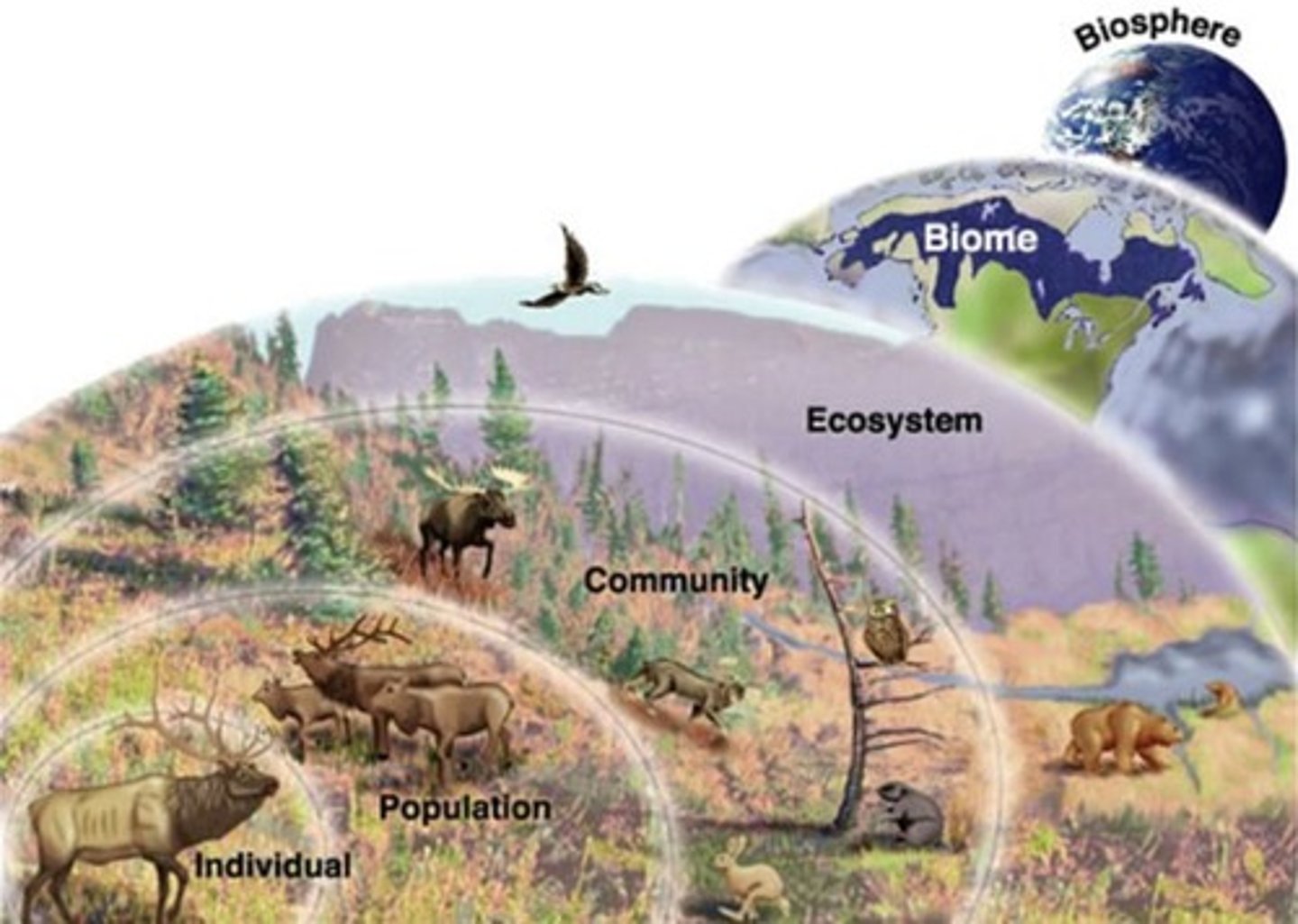
Species
A group of similar organisms that can breed and produce fertile offspring.
Population
A group of individuals that belong to the same species and live in the same area.
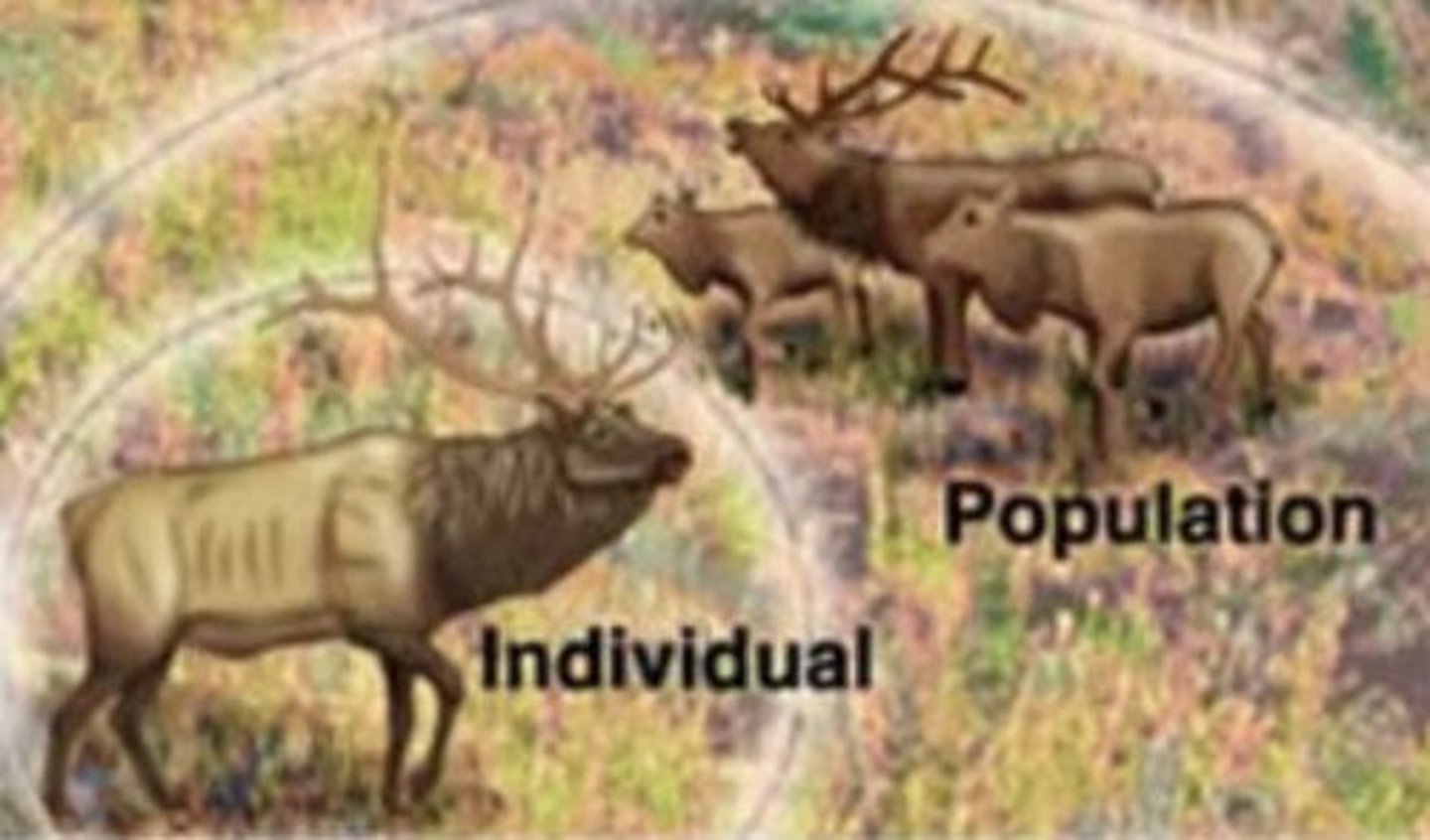
Community
An assemblage of different populations that live together in a defined area.
Ecosystem
All the organisms that live in a place, together with their physical environment.
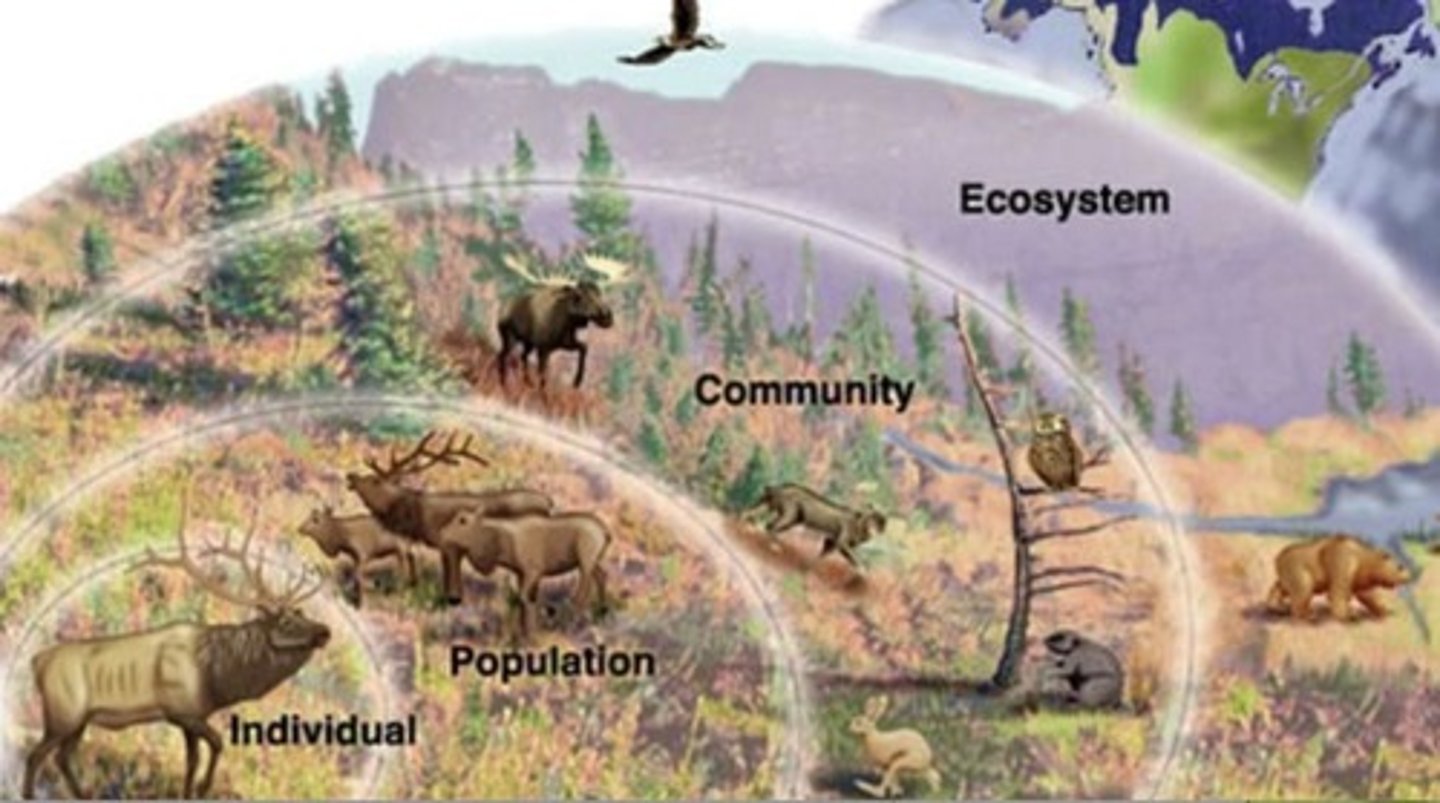
Biome
A group of ecosystems that share similar climates and typical organisms.
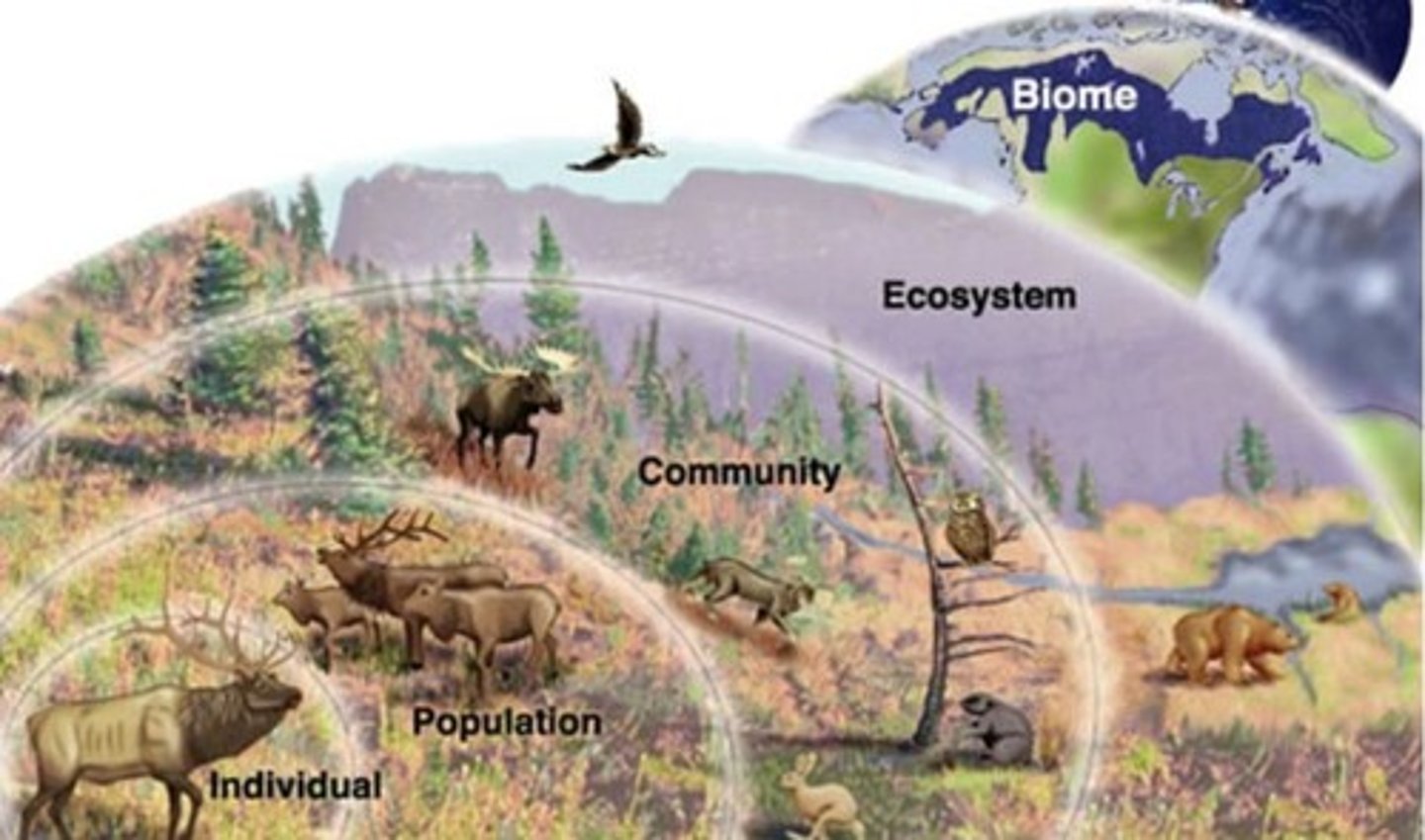
Biosphere
Consists of all life on Earth and all parts of the Earth in which life exists, including land, water and the atmosphere.
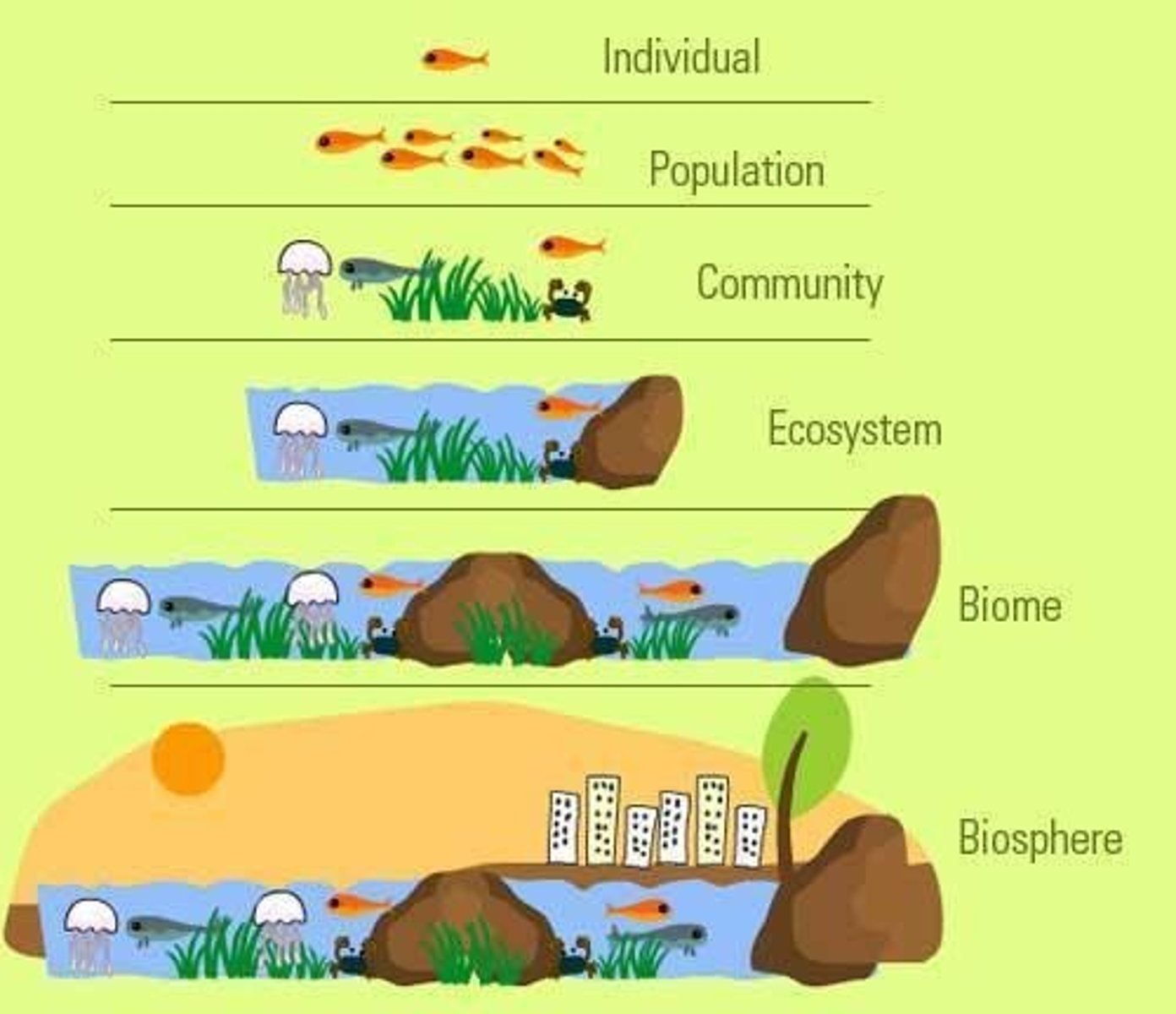
Biotic Factors
The biological influences on organisms, including any living part of the environment with which an organism might interact.
Abiotic Factors
Physical components of an ecosystem, any nonliving part of the environment.
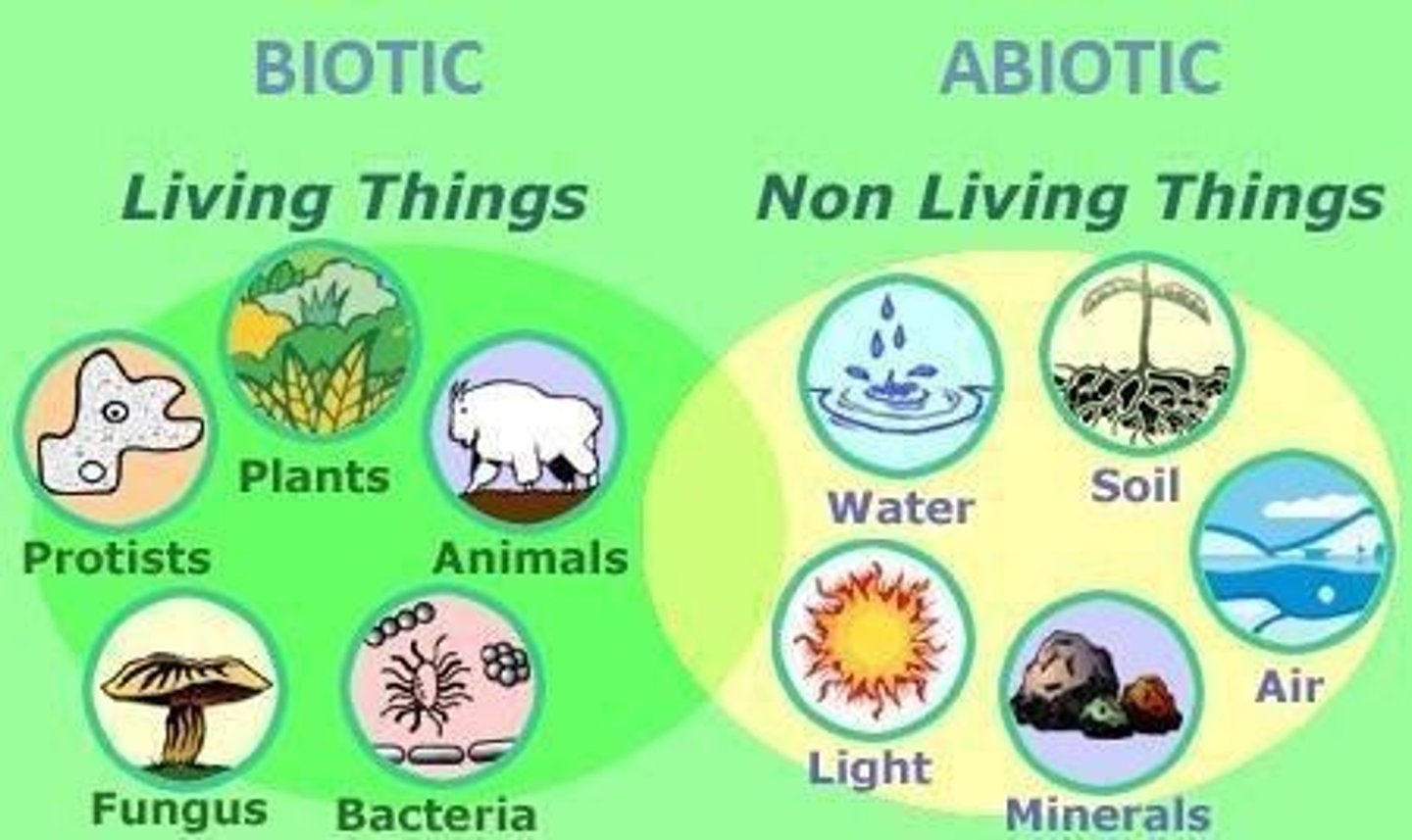
Tolerance
The ability of each species to survive and reproduce under a range of environmental circumstances.
Niche
Describes what an organism does and how it interacts with biotic and abiotic factors in the environment.
Resource
Any necessity of life, such as water, nutrients, light, food or space.
Competitive Exclusion Principle
States that no two species can occupy the same niche in exactly the same habitat at exactly the same time.
Logistic Growth
Occurs when a population's growth slows and then stops, following a period of exponential growth.
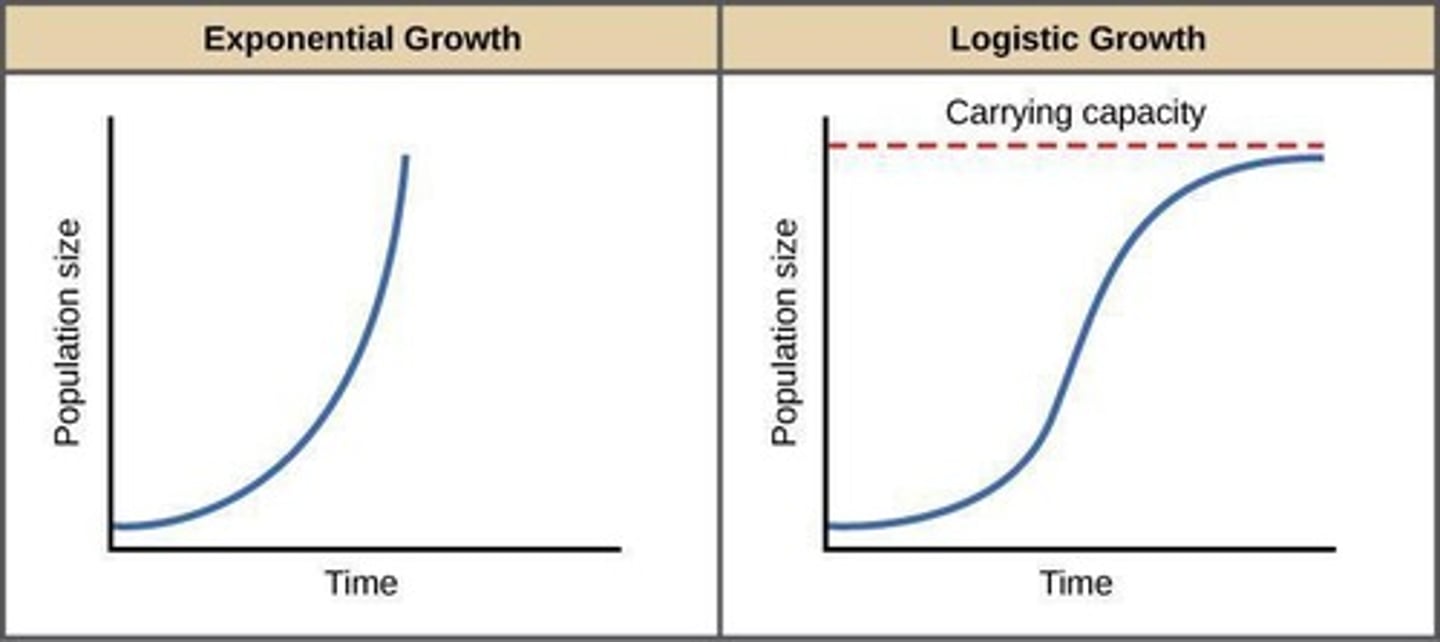
Carrying Capacity
The maximum number of individuals of a particular species that a particular environment can support.
Interspecific Competition
Competition between 2 different species.
Intraspecific Competition
Competition between individuals from the same species.
Predation
An interaction in which one animal (the predator) captures and feeds on another animal (the prey).
Herbivory
An interaction in which one animal (the herbivore) feeds on producers (such as plants).
Keystone Species
Changes in the population of a single species, called a keystone species, can cause dramatic changes in the structure of a community. (ex: Sea otters + kelp forests)
Symbiosis
Any relationship in which two species live closely together is called symbiosis, which means 'living together.'
Mutualism
Relationship between species in which both benefit.
Commensalism
Relationship in which one organism benefits and the other is neither helped nor harmed.
Parasitism
Relationships in which one organism lives inside or on another organism and harms it.
Producers
Autotrophs are organisms that can capture energy from sunlight or chemicals and convert it into forms that living cells can use. (ex: alage, plants, certain bacteria)
Primary Producers
Autotrophs are called primary producers because they produce and store energy in forms that make it available to other organisms that eat them.
Photosynthesis
Through the process of photosynthesis, primary producers capture solar energy to power chemical reactions that convert carbon dioxide and water into oxygen and energy.
Chemosynthesis
Some primary producers (like bacteria) carry out a process called chemosynthesis in which chemical energy (instead of solar energy) is used to produce energy.
Consumers
Heterotrophs are organisms that must acquire energy from other organisms by ingesting them in one way or another. (ex: animals, fungai)
Types of Consumers
Carnivores kill and eat other animals.
Herbivores
Obtain energy and nutrients by eating plant leaves, roots, seeds, or fruits.
Scavengers
Animals that consume the bodies of animals that have been killed by other predators. (ex: vultures)
Omnivores
Animals whose diets include a variety of foods that usually include both plants and animals. (ex: humans, bears, pigs)
Decomposers
Decomposers 'feed' by chemically breaking down organic matter. (ex: bacteria, fungi, mushrooms)
Detritivores
Feed on detritus particles, often chewing or grinding them into even smaller pieces. (ex: snails, crabs, worms, mites, shrimp)
Food Chain
A food chain is a series of steps in which organisms transfer energy by eating and being eaten.
Trophic Level
Each step in a food chain or food web is called a trophic level.
Food Web
A network of feeding interactions in an ecosystem that is more complicated than a food chain.
Aquatic Ecosystems
In some aquatic food chains, primary producers are a mixture of floating algae called phytoplankton and attached algae.
Short term ecosystem effect
Immediate consequences of the frog die-off on the ecosystem.
Long term ecosystem effect
Long-lasting consequences of the frog die-off on the ecosystem.
population impact
The effect on other organisms in the food web due to changes in a certain species population.
Ecological pyramid
A diagram that illustrates the trophic levels in an ecosystem, showing energy or matter at each level.
Energy pyramid
A type of ecological pyramid that shows the relative amount of energy available at each trophic level.
Biomass pyramid
A pyramid that illustrates the total amount of living tissue within a given trophic level.
Numbers pyramid
A pyramid that shows the relative number of individual organisms at each trophic level.
what does a Population size determine?
Factors that determine the size of populations, including geographic range, density and distribution, growth rate, and age structure.
Geographic range
The area inhabited by a population, which can vary in size depending on the species.
Population density
The number of individuals per unit area in a population.
Population distribution
The spacing of individuals in a population across its range, which can be random, uniform, or clumped.
Growth rate
A measure that determines whether the size of a population increases, decreases, or stays the same.
Birth rate vs. death rate
The comparison of how many individuals are born versus how many die, affecting population size.
Immigration
The process by which individuals move into a population's range from elsewhere.
Emigration
The process by which individuals move out of a population's range.
Exponential growth
A growth pattern where the larger a population gets, the faster it grows under ideal conditions.
Age structure
The distribution of males and females of each age within a population.
Limiting factor
A factor that controls the growth of a population.
Density-dependent limiting factors
Factors that operate strongly only when population density reaches a certain level, such as competition and predation.
Density-independent limiting factors
Factors that affect all populations similarly, regardless of size, such as unusual weather and natural disasters.